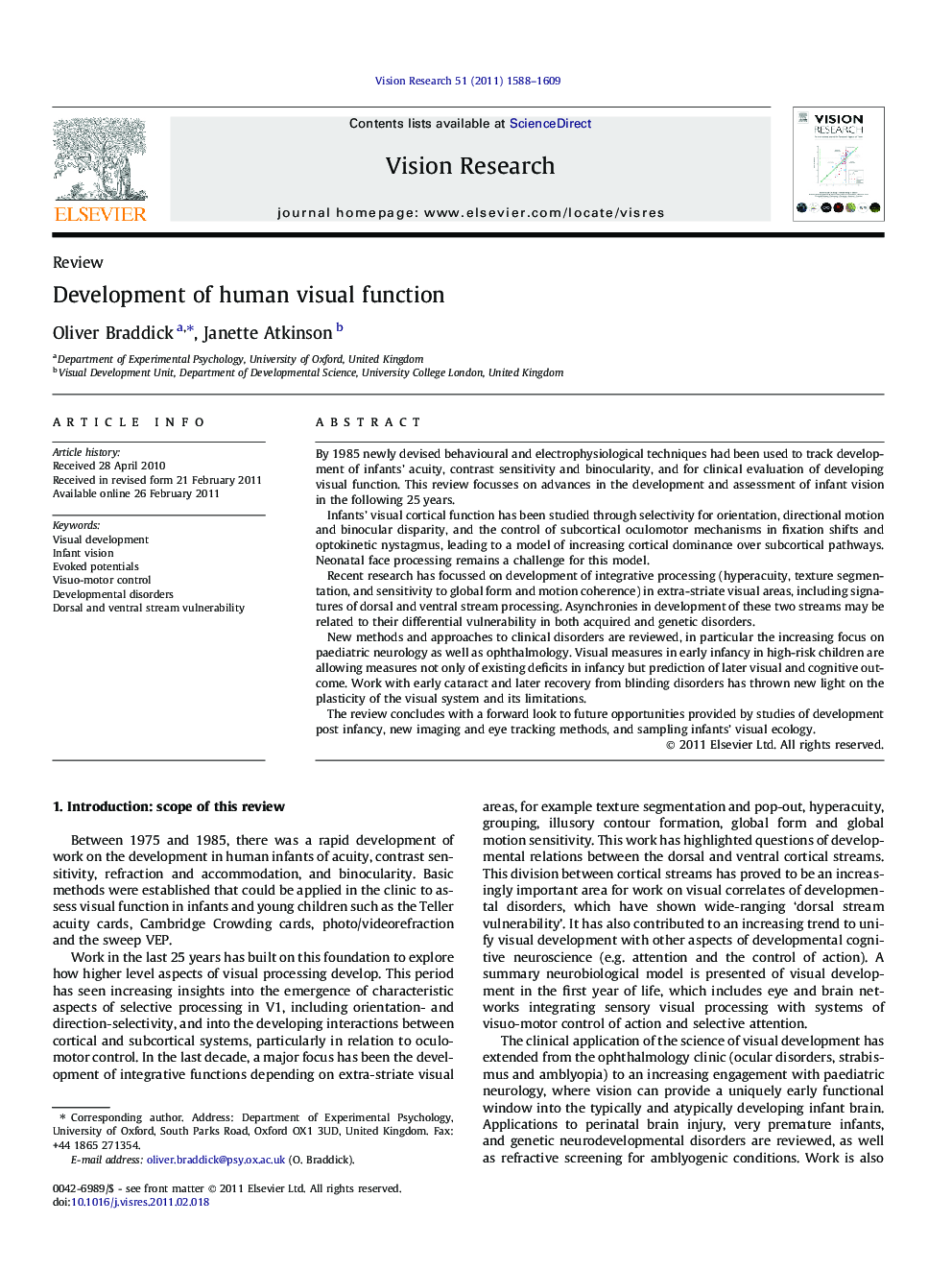| Article ID | Journal | Published Year | Pages | File Type |
|---|---|---|---|---|
| 6203765 | Vision Research | 2011 | 22 Pages |
By 1985 newly devised behavioural and electrophysiological techniques had been used to track development of infants' acuity, contrast sensitivity and binocularity, and for clinical evaluation of developing visual function. This review focusses on advances in the development and assessment of infant vision in the following 25Â years.Infants' visual cortical function has been studied through selectivity for orientation, directional motion and binocular disparity, and the control of subcortical oculomotor mechanisms in fixation shifts and optokinetic nystagmus, leading to a model of increasing cortical dominance over subcortical pathways. Neonatal face processing remains a challenge for this model.Recent research has focussed on development of integrative processing (hyperacuity, texture segmentation, and sensitivity to global form and motion coherence) in extra-striate visual areas, including signatures of dorsal and ventral stream processing. Asynchronies in development of these two streams may be related to their differential vulnerability in both acquired and genetic disorders.New methods and approaches to clinical disorders are reviewed, in particular the increasing focus on paediatric neurology as well as ophthalmology. Visual measures in early infancy in high-risk children are allowing measures not only of existing deficits in infancy but prediction of later visual and cognitive outcome. Work with early cataract and later recovery from blinding disorders has thrown new light on the plasticity of the visual system and its limitations.The review concludes with a forward look to future opportunities provided by studies of development post infancy, new imaging and eye tracking methods, and sampling infants' visual ecology.
⺠Advances in the development and assessment of infant vision since 1985 are reviewed. ⺠Visual cortex function emerges to dominate subcortical systems in the early months. ⺠Recent infant research has focussed on integrative functions of extra-striate areas. ⺠Clinical applications are increasingly in pediatric neurology. ⺠Future opportunities in new methods and problem areas are reviewed.
